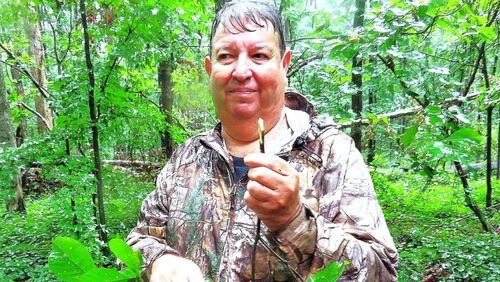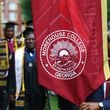Georgia has more then 210 “native tree” species, which tree experts define as being found during the last three centuries growing wild and reproducing naturally in Georgia and not introduced into the state by humans.
Some natives, such as the red maple, occur all over the state. Others grow only in certain areas, such as the live oak (the state tree) in the Coastal Plain and the Eastern hemlock in the mountains.
But there's a place near Atlanta where some 90 percent of all Georgia native tree species thrive within close proximity of one another — the 330-acre Thompson Mills Forest and State Arboretum in Braselton in Jackson County. Owned and managed by the University of Georgia, the preserve was designated by state legislators in 1991 as Georgia's official arboretum.
Last week, braving a steady rain, members of the Over the Hill Hiking Group, based at Oak Grove United Methodist Church in Decatur, walked the grounds to see as many species as we could.
Our leader was Bill Lott, the arboretum’s manager since its inception. Over the years, he and his staff have coaxed dozens of native species to grow here, many of them far from their preferred habitats.
We were amazed to see a live oak from the coast growing only a short distance from a yellowwood tree, which prefers living in North Georgia mountain coves. Nearby, a bald cypress, an iconic tree of Coastal Plain swamps, stood on high ground.
Lott offered tidbits about several of the species. One was the Hercules-club, native to southwest Georgia. It’s also called the “toothache tree” because chewing on its leaves, bark or twigs causes a numbness of the tongue, teeth and gums — the reason Native Americans used it to relieve toothache.
IN THE SKY: From David Dundee, Tellus Science Museum astronomer: The Perseid meteor shower, visible through Wednesday, peaks Saturday night with 50 meteors per hour — in the northeast from 2 a.m. until dawn.
The moon is new Saturday night. Brilliant Venus is low in the west just after dark and sets about two hours later; it will appear near the moon Tuesday night. Mars, also shining brightly, is in the east at dusk. Jupiter is in the southwest at dusk and appears near the moon Thursday night. Saturn is high in the south just after dark.
IN OTHER NEWS:






